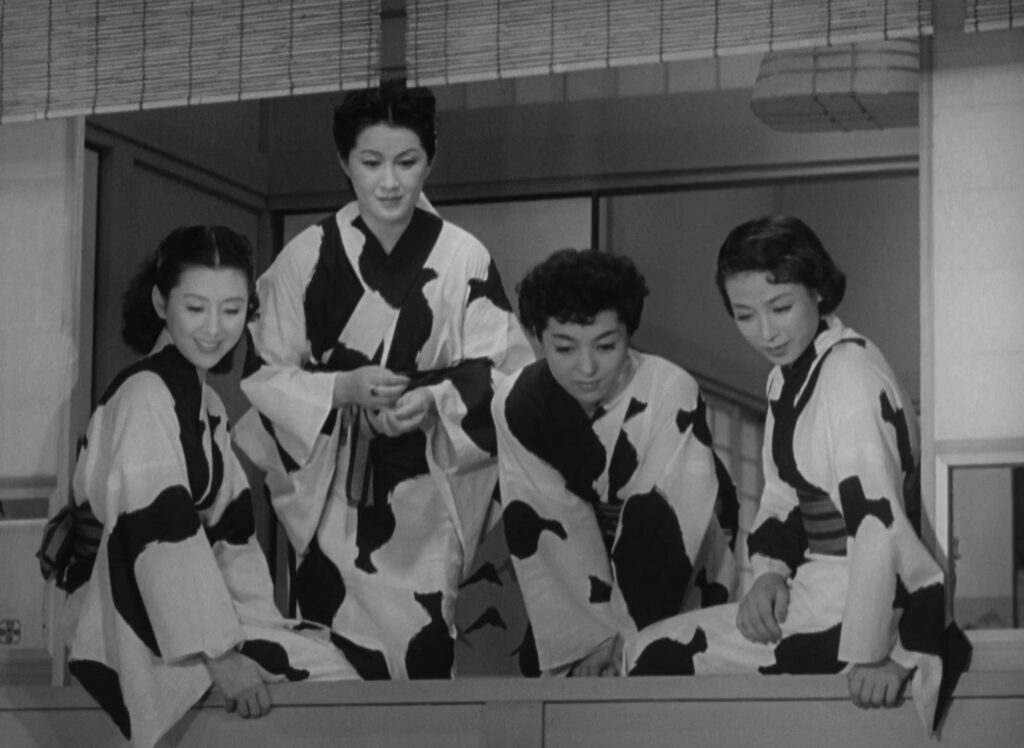
The Flavor of Green Tea over Rice
1952, directed by Yasujiro Ozu
To say that Yasujiro Ozu makes films about time does not mean that he likes to speculate about metaphysics or promote some alternate spiritual vision of time. Physics may describe time as a constant measurable dimension, but Ozu’s insight is that our feeling of time varies, and that this variation has important effects on our lives. By 1952, Ozu’s most recent film Early Summer had ended with an elegant summary of the ways humans experience time, combining the senses of progressive time, cyclical time, and eternity in its last few shots, gestures, and words. It’s strange, then, that The Flavor of Green Tea over Rice reverts to such a simplistic vision of time, reducing the narrative almost exclusively to the mode of clock-time, the kind you’d expect in any movie anywhere. There is, however, a good reason for this. The movie’s relentlessly forward-moving sense of time, which is so typical of the modern capitalistic world, serves to offset a new insight.
The Flavor of Green Tea over Rice opens with a Tokyo street viewed through the windshield of a moving car. Setsuko and Taeko ride in the back seat. The first shots switch direction a few times, but there’s always a sense of forward motion. A moving camera is relatively rare in Ozu’s late films, but less so here, with many transitional shots of train rides or tracking motion. Apart from the koi pond at Shuzenji, there are hardly any appearances of water or boats, the usual markers of eternal time in Ozu’s films. Likewise, there are hardly any children apart from the brief appearance of a boy at Setsuko’s home in Oiso. This absence is uncharacteristic of Ozu, and it diminishes his usual emphasis on the cyclical time of new generations. Furthermore, apart from a brief scene at a kabuki play which none of the characters is absorbed in, there’s barely any sign of traditional Japan, like the temples and shrines that punctuate Ozu’s previous three films. There’s a fair amount of classical Western design, both in central Tokyo and in the Satake house, but in mid-century Japan that would have connoted the forward thrust of globalization.
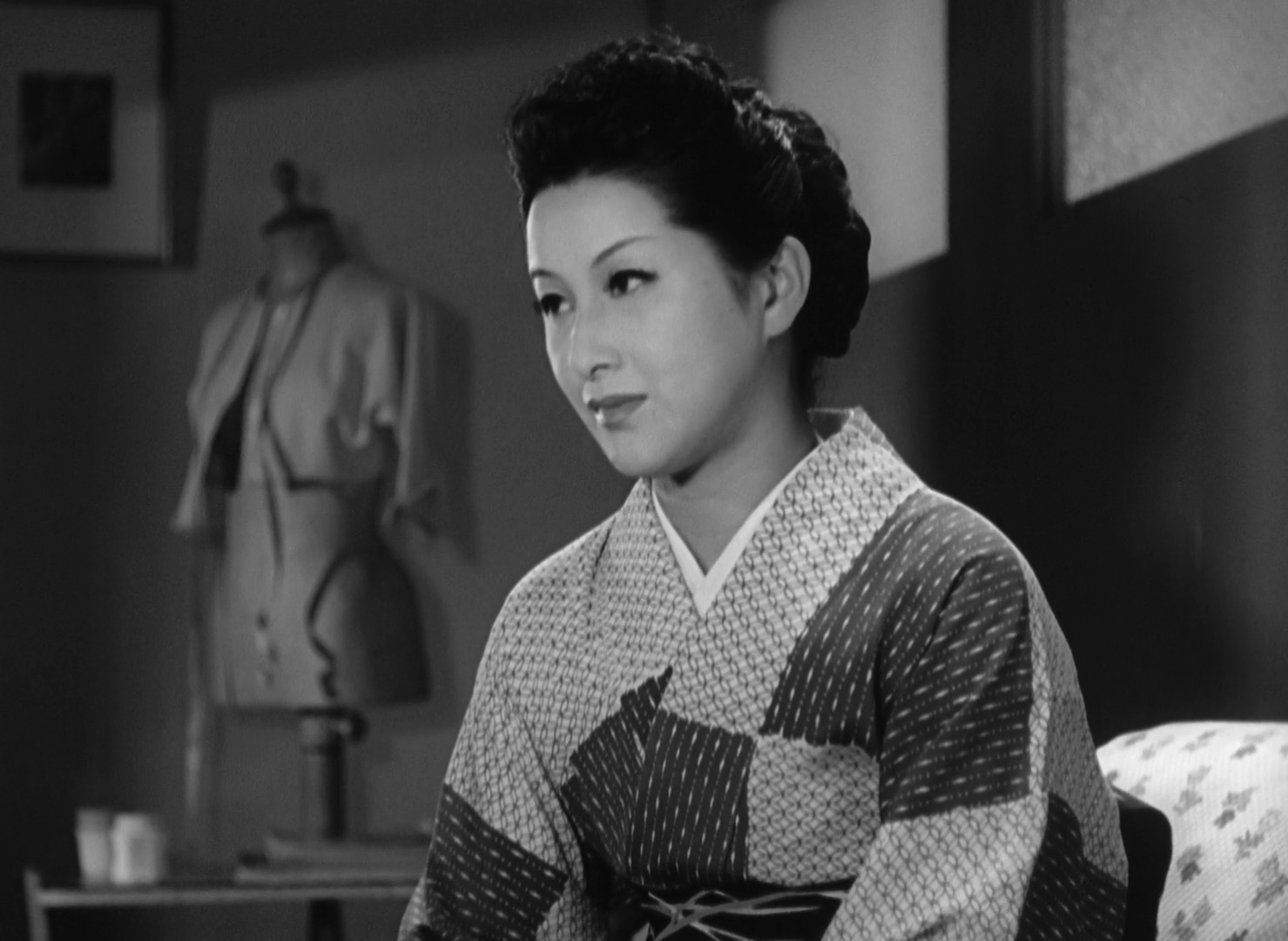
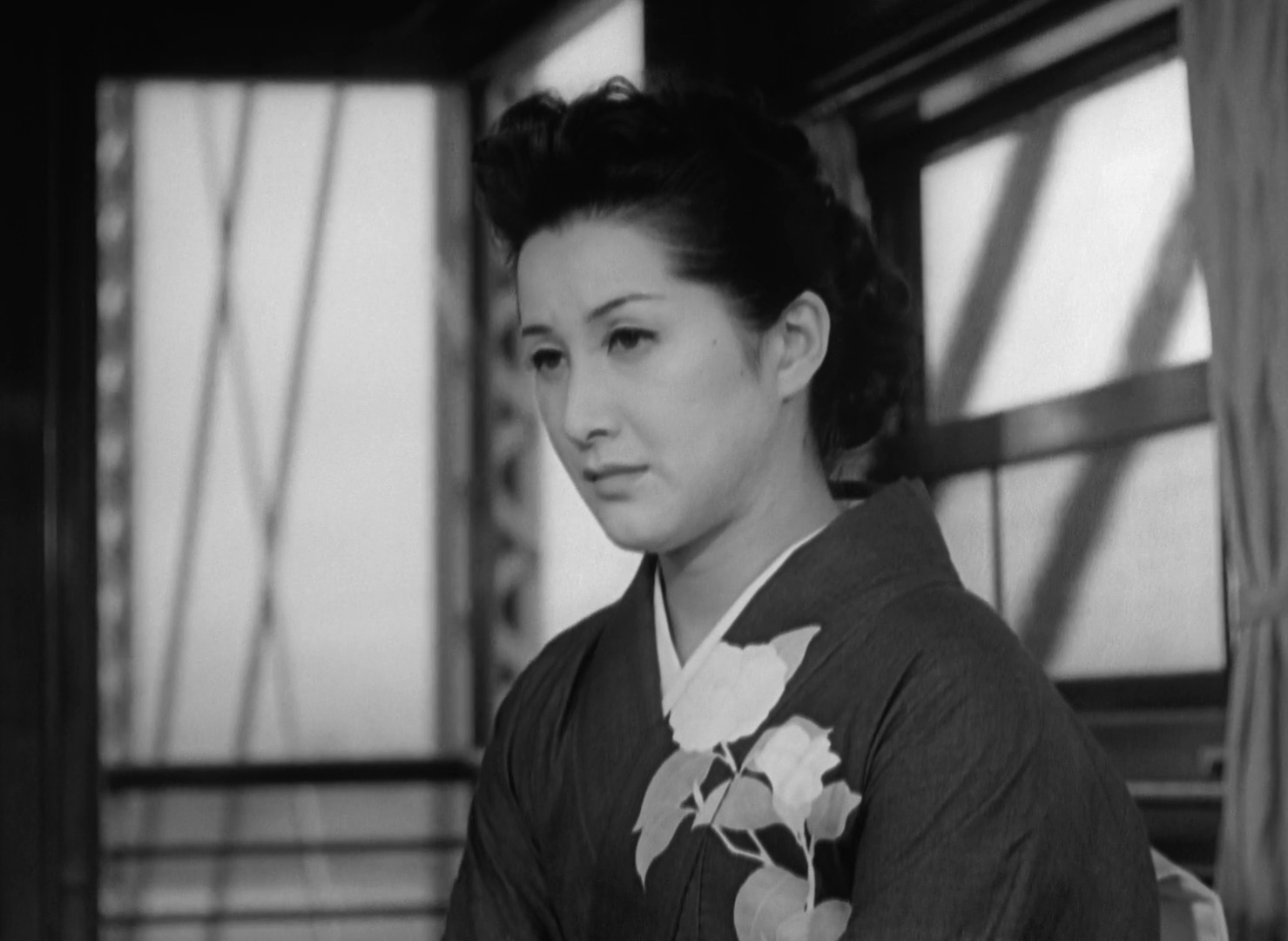
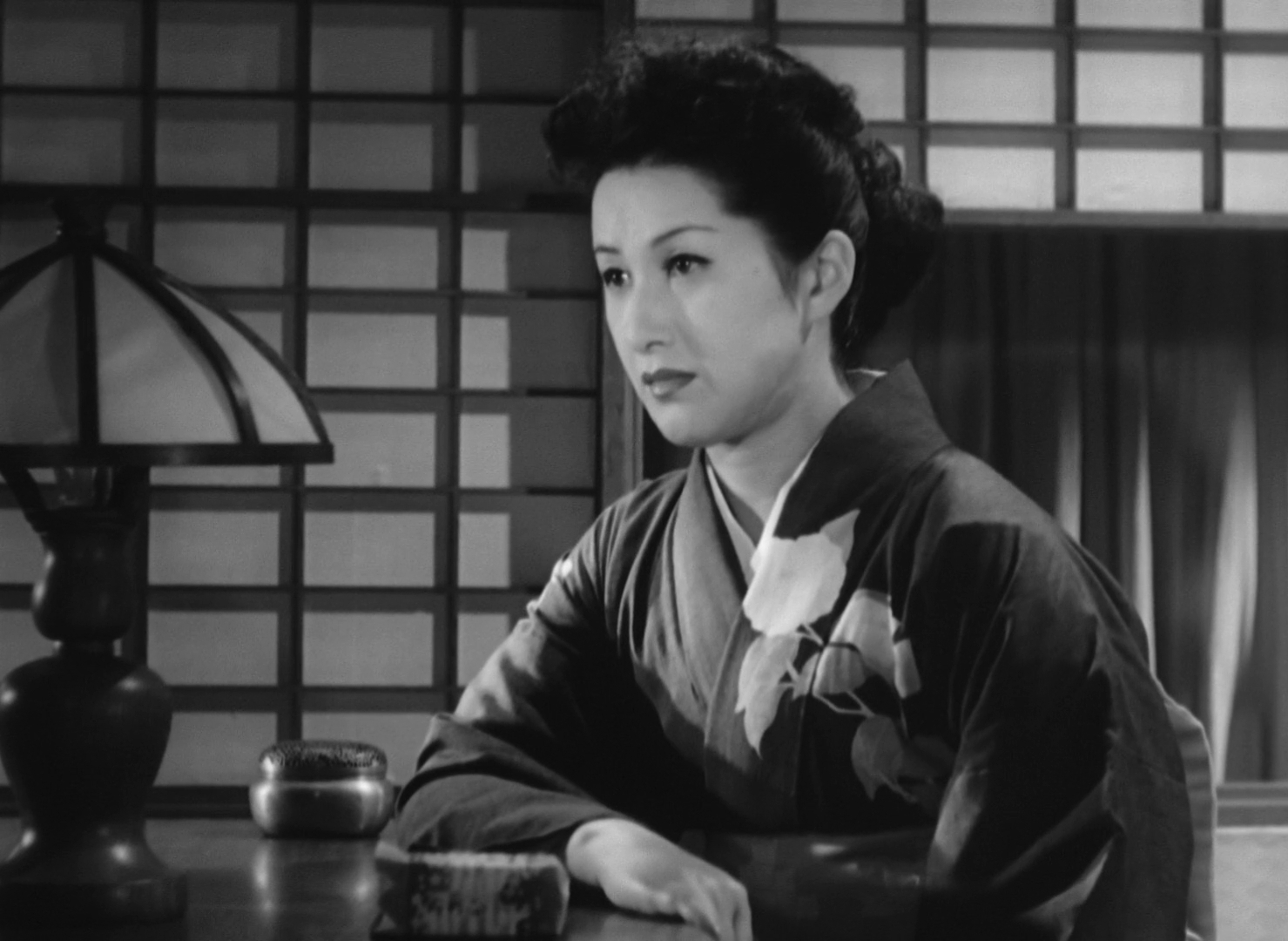
A closer survey reveals how thoroughly the film emphasizes advancing linear time. As the car in the opening scene approaches Aya’s store in Ginza, the Wako clock tower – an important marker of time in Late Spring – comes into view (the facing Time Life advertisement has been painted over, which can’t be helped). Again and again the film reminds us of Japan’s modernization. Aya’s fashion store, Mokichi’s office, the bars and restaurants of Tokyo, the baseball game, the pachinko arcade, the velodrome, and the Pan Am airplane are all signs of a new globalizing and industrial world. Just as Noriko’s fiancé in Late Spring was likened to Gary Cooper, Setsuko and Aya discuss the face of French screen idol Jean Marais.
Even where the film points to the past, the future or the modernizing present take the upper hand. While the four women wear traditional clothes at the hot springs, the scene emphasizes their newfound independence, sneaking away from home and gossiping disrespectfully about their husbands. There’s a running subplot about Setsuko’s marriage arrangement, but she prevails against tradition, preferring Non-chan to her assigned mate. Aya’s husband seems to be cheating on her like any old patriarch, but she turns the situation to her advantage, dominating her husband in their one brief meeting. At the pachinko parlor Mokichi and Non-chan are ironically pulled into the past, meeting a war comrade and reminiscing about Singapore, but their conversation regards the past as something lost.
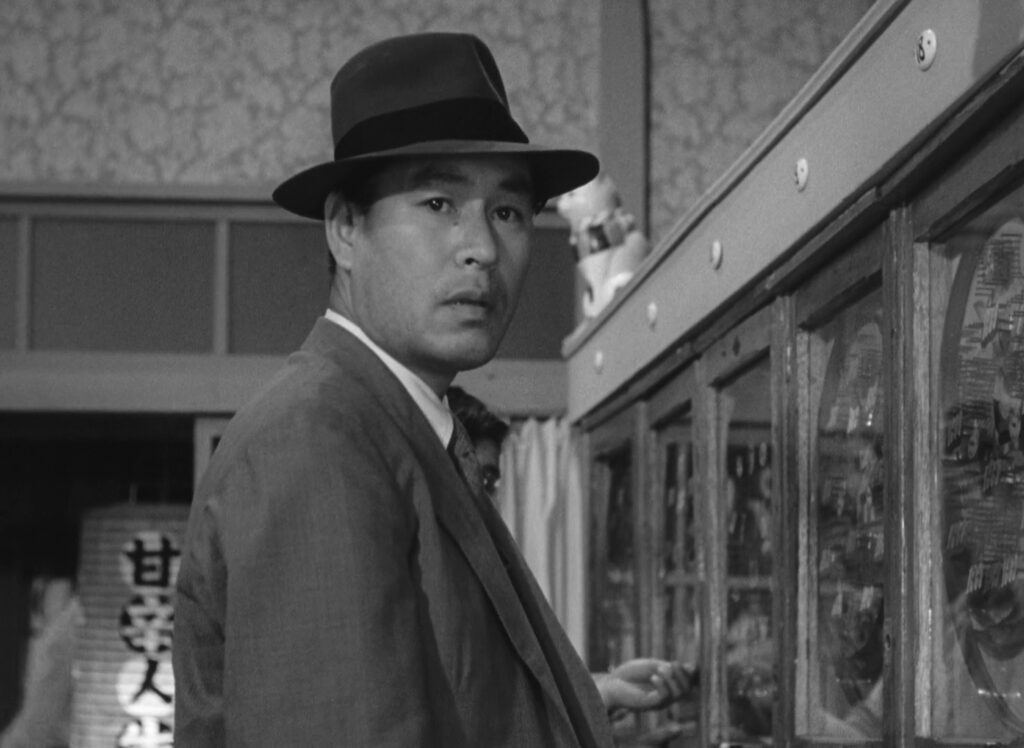
As if taking its forward motion to an extreme, the film ends on a forward tracking shot, following Setsuko and Non-chan as their intimate conversation turns into a comic quarrel, mirroring the more serious contention between Taeko and Mokichi. The ending leaves no unanswered questions, yet the camera movement is a polite reminder that life goes on, and that the new couple’s good spirits may not always sustain their relationship.
If we didn’t realize how consciously the film maintains its forward momentum, never yielding to the past or to any feeling of the eternal, we might simply conclude that it’s a bit plot-bound. Among Ozu’s postwar films, critics tend to prefer the ones that mix different perspectives of time, especially the Noriko trilogy and the color films. Once we see, however, how systematically linear the sense of time is in The Flavor of Green Tea over Rice, we should be ready to discover how it breaks the pattern.
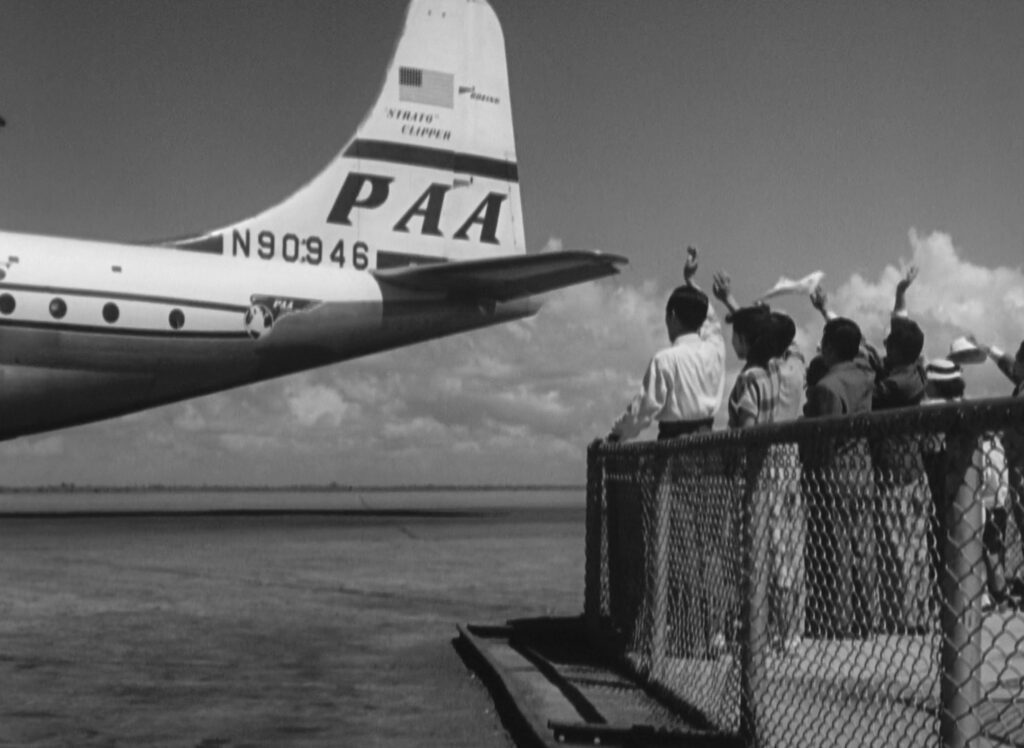
The most celebrated scene is the couple’s reconciliation toward the end, when Taeko finally comes to understand and appreciate her husband as they prepare and enjoy a late-night meal together. The scene follows a serious breakdown in their relationship, triggered by Mokichi’s defense of Setsuko, when he tells his wife, in front of her niece, that “Forcing her to marry against her will would just create another couple like us.” Taeko refuses to talk to her husband for about ten days afterward, and the impasse reaches the point where she removes the wedding ring from her finger. They only reconcile when he returns unexpectedly from an aborted flight to Uruguay, and we might take it for granted that she’s either caught off guard or tired of fighting him – but it’s a formidable task for the movie to bridge the gulf between them, and it’s well worth appreciating exactly how it achieves that.
Mokichi rings the doorbell a few seconds after the clock chimes 11:00 p.m., and he’s scheduled to fly out again at 9:00 a.m. The plane to Montevideo had had engine trouble two hours out and returned to Tokyo. Mokichi is exhausted, but more hungry than sleepy, and the servants have gone to bed, so he and Taeko scrounge for food in the kitchen. What’s so critical here is that the consistent forward movement of time has been broken – not in physical fact, but in feeling. Mokichi’s supposed to be far over the Pacific by now, but he finds himself at home instead, at an hour when he’d probably be asleep after a good dinner. Taeko too has aborted a journey, returning from Kobe, and the moment feels strange to both of them, especially as they’re unaccustomed to cooking in their own kitchen. The older servant is snoring, but the house is otherwise strangely quiet.
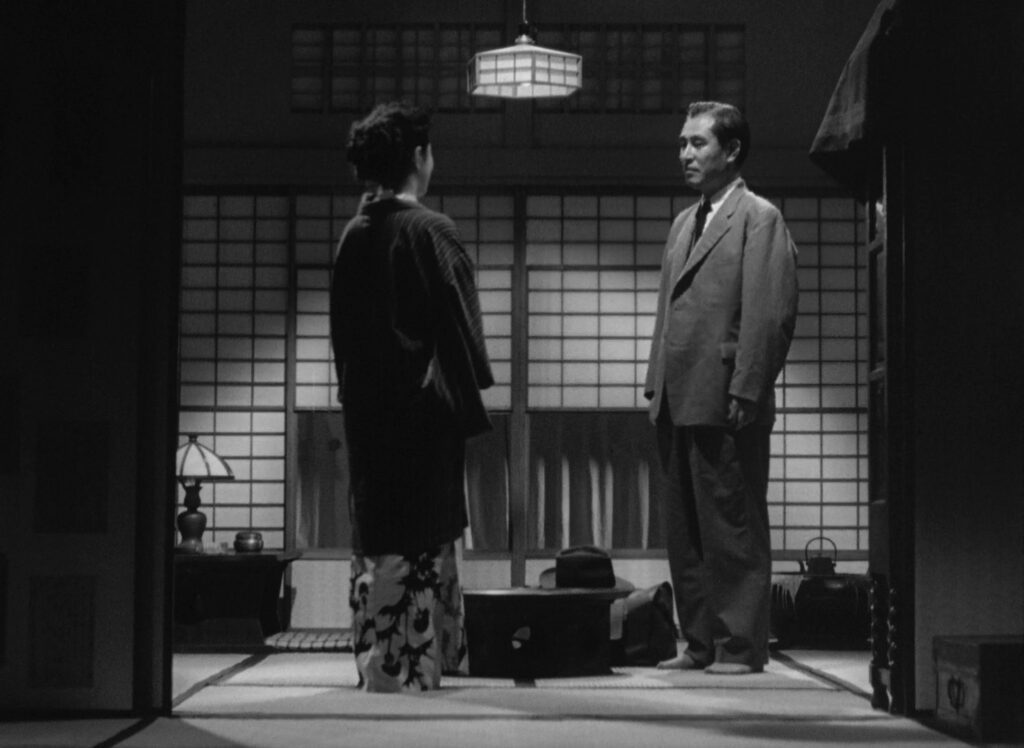
The insight here is that life sometimes puts wrinkles in time. The couple’s nighttime encounter must feel like a kind of limbo, a hole in time that opens up new possibilities. The circumstances may be exceptional, but we’ve doubtless all experienced moments like this that stand apart from the usual flow of life. The sense of time doesn’t correspond to the usual modes of linear time, repetition, or even to the sense of eternity we might feel when we stand back from life. In this little wrinkle of time, the usual rules no longer hold sway, and both husband and wife give themselves permission to drop any obstacles to their harmony. Anyone who looks closely at life will probably discover many such wrinkles in time, some smaller than the one depicted here, and a wise person can take advantage of the opportunities those wrinkles offer.
Even within the film, this extraordinary scene is not entirely alone. In the first scene at Aya’s store, Taeko recounts her experience with Setsuko at the intermission of a kabuki play. The key scene in the kitchen is like an intermission in life, an indeterminate moment between stages of action. The women’s outing at the hot springs is also a kind of intermission, giving them opportunity to display their feelings, and Setsuko gives herself an unscheduled intermission during the meeting with her suitor, stepping away from the theater to meet her uncle and Non-chan. Also within the climactic scene, as Taeko and Mokichi go from the kitchen to the dining room, two clocks strike midnight in succession, leaving a few seconds between them where the correct placement of the date is ambiguous… a wrinkle within the wrinkle of time.
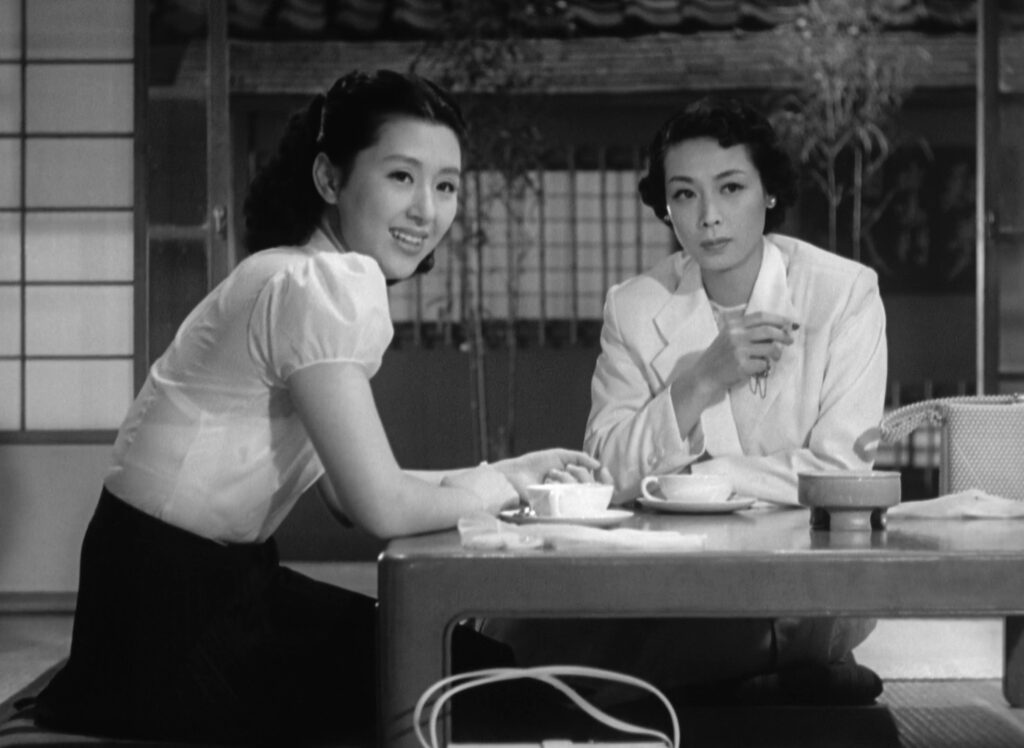
The scene ends with two rather curious pillow shots that signify the unspoken result of the couple’s reconciliation – a phallic water tower and a bushy vulva-shaped tree. The meaning is left to our imagination, but it underscores the power that such odd moments have in our life, in this case turning a couple’s contempt and resentment around so totally that they can enjoy the full benefits of marriage.
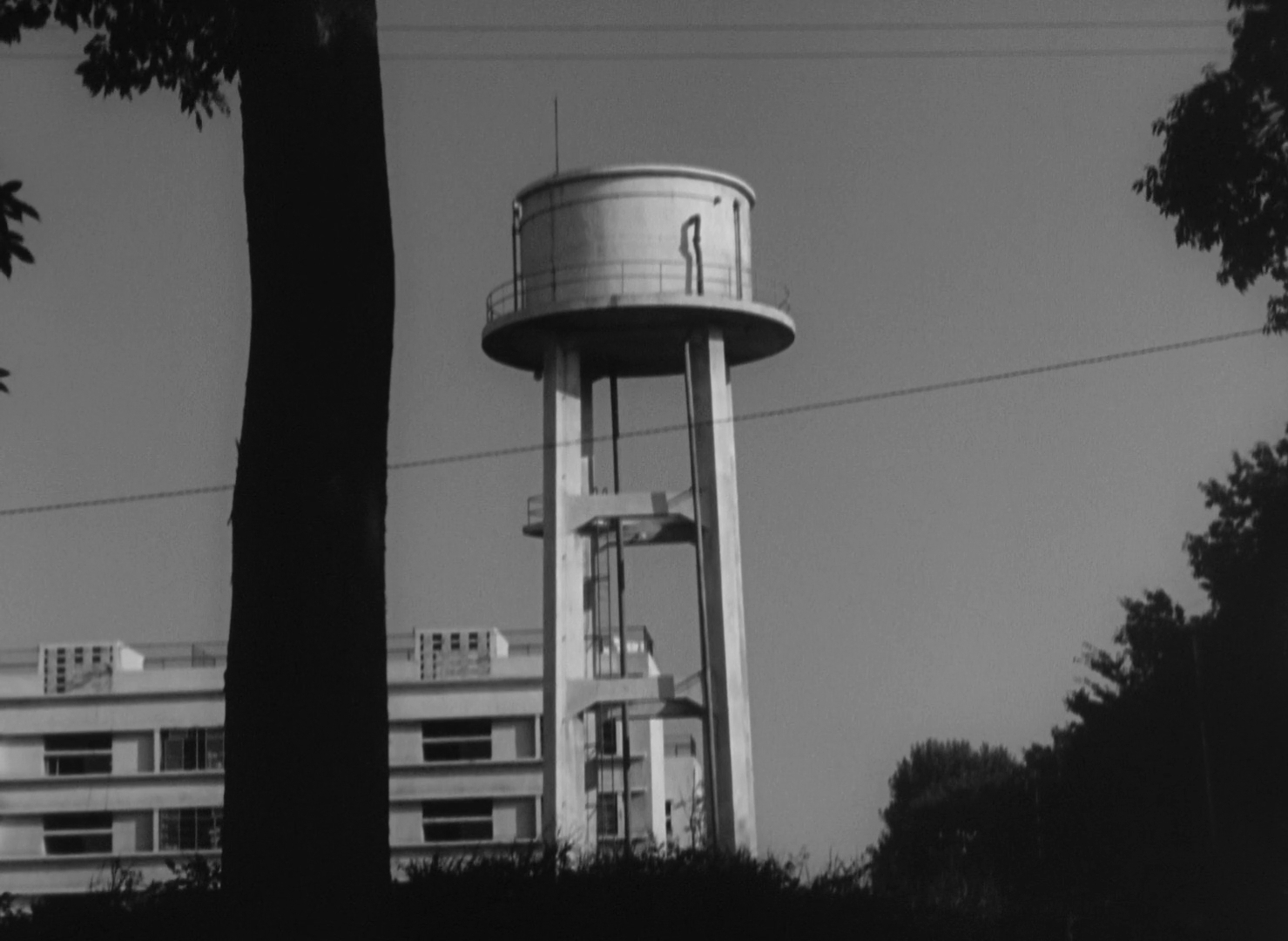
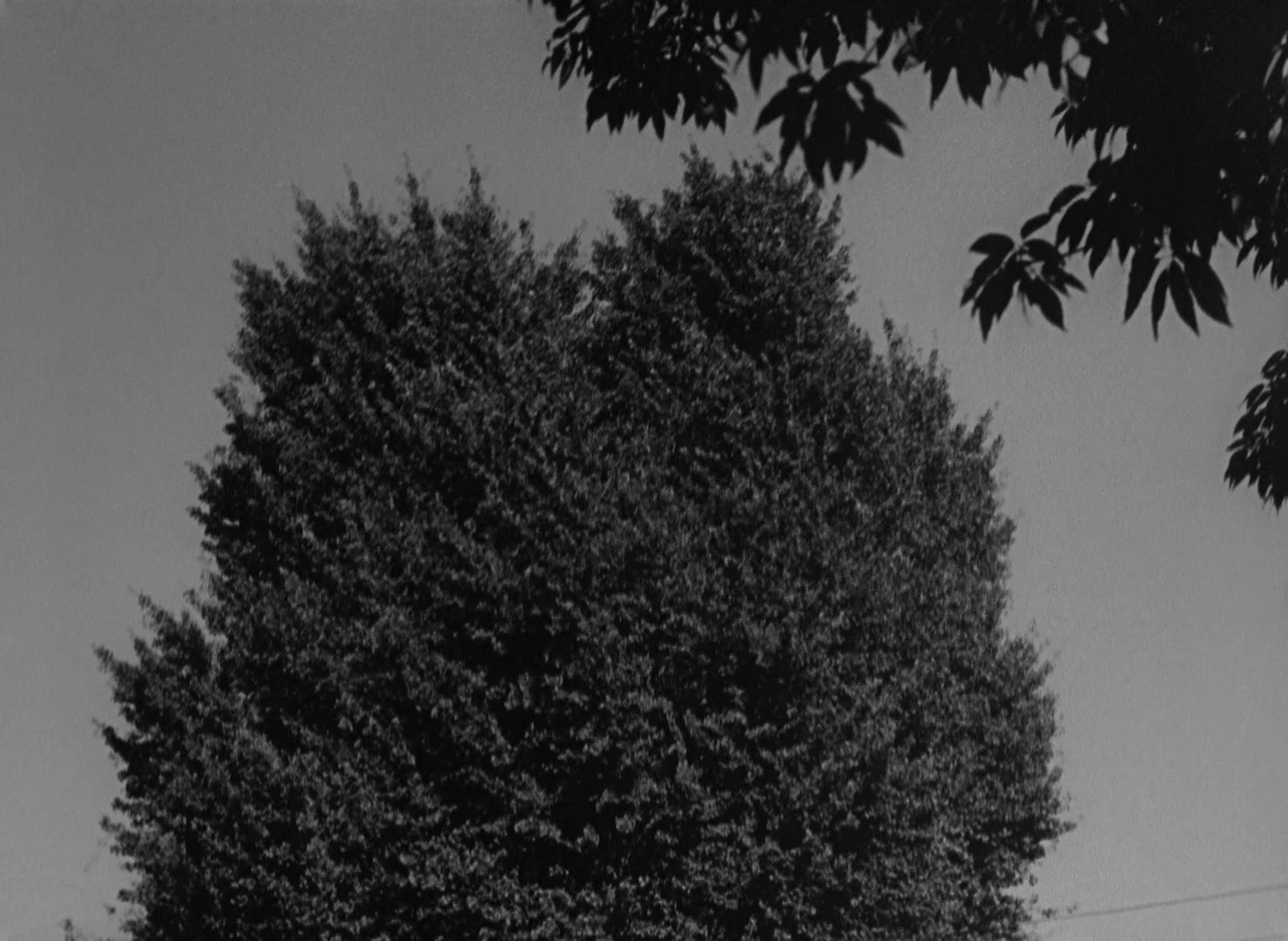
None of this exactly contradicts the conventional view that The Flavor of Green Tea over Rice is a film about marriage. To say that it’s rather a film about time subtracts nothing from that view, but it’s not merely a shift in emphasis. It’s a greater credit to the film. Ozu’s subsequent Tokyo Story is such a thorough demonstration of the power of showing over telling that it’s inconceivable that he didn’t realize that the lesson about marriage here was reduced to telling: “That’s what marriage is. The flavor of tea over rice.” Again, in the next scene, when Taeko advises Setsuko about choosing a husband, she reduces the lesson to plain words. In a movie about marriage those lines would be a capital sin, a confession of failure, but if the movie is primarily about time then we can forgive it. What’s important is not the particular understanding that the couple reaches, but the miraculous way that they reach it, allowing a ripple in the ever-moving stream of time to restore their relationship.
CONNECTIONS:
Late Spring – Wako clock tower as a marker of time; conversation about a foreign screen idol’s face
Early Summer – Young woman resists a marriage arrangement; nearly identical shots of a kabuki theater
Journey to Italy – Marital reconciliation triggered by unaccustomed circumstances; strange effects of time on life
L’avventura – A small wrinkle in time (Mokichi’s return, Sandro boarding the westbound train) smooths things over for a couple
Late Autumn – Juxtaposition of a tower and foliage, representing male and female
An Autumn Afternoon – Focus on linear time to the exclusion of cyclical and eternal time